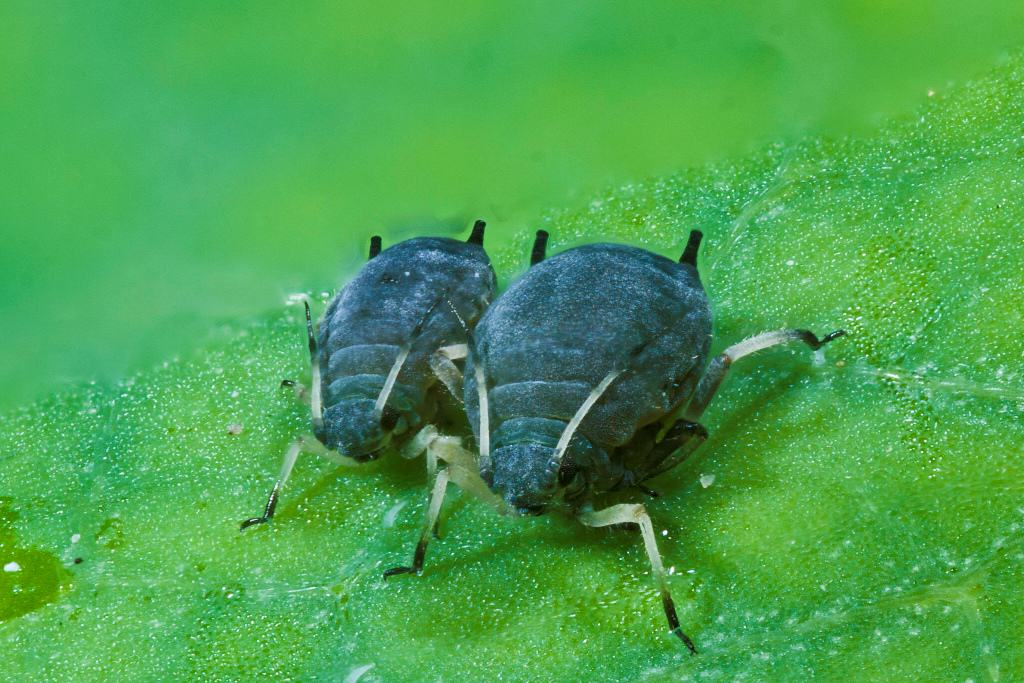Combatting Aphids in Cannabis Seeds. Natural and Chemical Methods

Find out how to fight aphids in cannabis seeds using natural and chemical methods. Aphids can cause significant damage to the growth and yield of your marijuana plants. In this article, we will discuss different techniques and products that can help protect valuable cannabis seeds from aphid infestations. Whether you prefer organic solutions or opt for chemical treatments, we have got you covered. Learn how to safeguard your cannabis seeds and ensure healthy plant growth.
Understanding the Aphid Problem in Cannabis Seeds
Aphids are a major problem for marijuana seeds as they cause damage and hinder healthy plant development. These small soft-bodied insects feed on plant sap which drains essential nutrients thereby weakening overall health of the plants. Aphids reproduce quickly leading to infestations that can spread rapidly throughout a crop of cannabis seeds.
Early identification of aphids is important for effective pest management. These pests are usually green, yellow, brown or black in color and can be found clustered on the undersides of leaves or along stems. They leave behind sticky residue called honeydew which attracts ants and promotes growth of black sooty mold.
Not only do aphids directly damage cannabis seeds by sucking their sap but they also transmit plant viruses. This may result into stunted growth, deformed leaves, reduced yields or even death of plants. Therefore it is necessary for marijuana growers to take appropriate measures against aphids so as not compromise seed health.
Understanding life cycle and behavior of aphids is key to controlling them successfully. These insects reproduce asexually giving birth to live young without mating thus enabling rapid increase in population size under favorable conditions. Additionally some types of insecticides may become ineffective due to resistance developed by aphids hence integrated pest management strategies should be used.
Regular inspection and monitoring of marijuana plants is crucial in early detection of aphid infestation . Preventive actions like maintaining clean growing environments, observing good hygiene practices as well as using physical barriers can help reduce chances of getting infested. Moreover, introduction of natural enemies such as ladybugs or lacewings provides biological control since they feed on aphids and help regulate their numbers.
Chemical control methods can be employed if aphid populations become too large or when pesticides are deemed necessary. However, it is important to follow instructions and guidelines provided by regulatory authorities so as to use these chemicals safely and effectively. Organic insecticides derived from plant extracts like neem oil or pyrethrin may serve as good alternatives to synthetic pesticides.
Natural Methods for Controlling Aphids in Cannabis Seeds
Aphids can be a common problem when growing cannabis seeds but there are several natural methods you can use to combat these pests without resorting to chemicals. These natural methods not only help control aphids effectively but also promote a healthier and more sustainable environment for your marijuana plants.
Introduce Beneficial Insects
One of the best natural ways to control aphids is by introducing beneficial insects into your cannabis garden. Ladybugs, lacewings and parasitic wasps are natural predators of aphids which can help keep their population in check. You can attract these beneficial insects by planting companion plants like fennel, yarrow or dill which act as a magnet for them.
Neem Oil
Neem oil is a natural pesticide that comes from the neem tree. It has compounds in it that mess up aphids’ hormones so they can’t have babies and will eventually die. Mix neem oil with water following the instructions on the bottle and spray it onto your cannabis plants where you see aphids. Do this every few days until there are no more aphids.
Physical Barriers
Physical barriers are another way to keep aphids off your marijuana plants naturally. You can use row covers or fine mesh nets to cover them up so aphids can’t get through. Make sure to secure the edges tightly so there aren’t any gaps for aphids to slip in through – this works best for outdoor gardens.
Homemade Sprays
There are many different homemade sprays you can make to control aphids organically. One common recipe uses water, dish soap, and garlic or cayenne pepper. Just mix these things together and spray it on your plants where the bugs are. The soapy water suffocates them while the garlic or cayenne pepper repels them – do this every few days until they’re gone.
Keep Plants Healthy
Keeping your cannabis plants healthy is important for preventing aphid infestations too! Give them plenty of sunlight, water, and nutrients; don’t over-fertilize because that attracts bugs like crazy; check regularly for signs of pests including aphids and take care of it right away if you find any.
These natural methods will help you get rid of those pesky little green bugs without using chemicals on your precious pot seeds – plus they’re good for the earth too!
Chemical methods should be used with caution and as a last resort because they can harm the environment and other organisms. Integrated Pest Management (IPM) strategies that use both natural and chemical methods may be the best way to deal with aphids in cannabis seeds.
Conclusion
There are many different ways for growers to get rid of aphids on their marijuana plants, both organic and chemical. Organic methods are good for the environment and keep the weed healthy. They include things like introducing helpful bugs, using organic sprays or oils, and following cultural practices such as checking plants often and keeping everything clean. Chemicals work fast but have risks too. Growers need to think about what might happen to the earth or their crop if they use them illegally or without thinking first. In short, people should choose between these two based on what is around them at that time but always try not to hurt anything while doing so.
